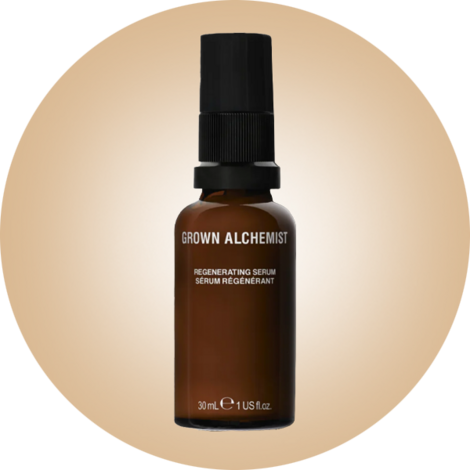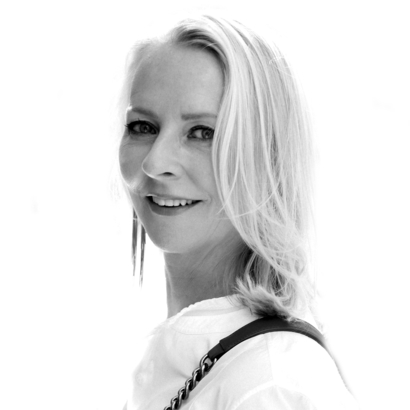Poor Sauvage. The men’s fragrance from Dior has been the No. 1 best-selling scent for nearly a decade. Not No. 1 in the men’s category or No. 1 in France or duty-free or some other designation from the sales-and-marketing team to goose the figures. No. 1 among everything, all genders, worldwide. Simone Biles–level. It’s hardly the object of pity. And yet No. 1 has its perils too. As Three Dog Night taught us, one is the loneliest number.
The people behind Sauvage are choosing not to kick back and watch the money roll in, perhaps while they sip cocktails on a luxury yacht, but to toss the dice with a new interpretation of their world-dominating scent. It’s the creation of Francis Kurkdjian, the perfume director at Dior who’s also the nose behind Baccarat Rouge 540, from Maison Francis Kurkdjian, an unstoppable phenomenon, both financially and TikTok-ally.
Kurkdjian’s new iteration is called Sauvage Eau Forte, which in itself is a riddle. Water (or eau) usually suggests dilution and weakness, not strength (forte). Nor does it sound particularly sauvage.
Kurkdjian is entirely clear-eyed about the challenge ahead of him. “When you are No. 1, everyone chases you,” he says. This isn’t arrogance. Kurkdjian didn’t create Sauvage in 2015; another perfumer, François Demachy, gets credit for that. “When you are No. 1, you have much more enemies. When you’re No, 1, you feel that you deserve it, you feel that it doesn’t need any extra effort. That you can lay on your bed and relax.
“I’m not saying it’s easy, but it’s comfortable. You are in the car, and you may be the driver or you are in the back seat, but the car is tuned.... And when it’s a high-end brand like Dior, the car is very comfortable. It’s comfortable, but the road can be bumpy.”
The Sauvage of 2015 had its fair share of bumps. I don’t need to tell you that its ads have always featured Johnny Depp, who came under scrutiny during his divorce from Amber Heard and his subsequent defamation suit against her. Surprisingly, the notoriety didn’t seem to diminish Depp or the fragrance. “I was at Macy’s when the controversy about Johnny started,” says Linda G. Levy, who was the merchandise manager of fragrances there before becoming president of the Fragrance Foundation, an industry organization. During the trial, she says, “people rallied around him. Who cares what was really true as long as he wasn’t abusive? But it put him on the map in ways that he never was before.”
Depp also appears in the ads for Sauvage Eau Forte, wearing piles of beaded jewelry and squatting before a backdrop of waterfalls that look very eau forte.
Even if you had a head cold, you could identify Sauvage Eau Forte as a scent for men, given the smoldering vision of Depp and the unadorned midnight-blue bottle. But the popularity of a fragrance doesn’t come from a movie star or an extravagant promotional budget. “No matter what else is done, if the juice isn’t good then there’s no chance of success,” says Levy.
Sauvage, the original and, now, this new variation, is a bit of an anomaly: a manly fragrance at a time when gender lines are loosening. The original Sauvage “is about thoughtless masculinity in a way,” says Kurkdjian. “No-brainer.” He also describes it as “clean-cut” and “like a little black dress for men.” The masculinity of Eau Forte is more sophisticated and less obvious. It aims at a freshness, he says, “while maintaining its strength.” A contradiction in a bottle.
Kurkdjian achieved that tension by creating an unusual water-based formula with a high concentration of perfume oils and no alcohol. He combined the cleanness of lavender with a burned note, “the smell of the fireplace,” he tells me, struggling to explain it exactly. “When you say ‘burnt,’ people think the negative way.” So not that. It has “some burnt facets, but there are good facets.” It’s dark and sensual. “Spiky,” Kurkdjian offers. “It’s a masculine scent that stays out of the clichés of what masculine is about in terms of perfume…. It’s musky, it’s woody, and the spices blend a bit in between.”
There was actually a precursor to these Sauvages, a citrusy cologne created in 1966 called Eau Sauvage, which dominated the men’s market for 30 years. Dior promoted it with a series of illustrations of men in various degrees of hairiness and nakedness. One wears an animal skin, caveman-style.
Despite the surging testosterone, all the Sauvages have female fans, too. I used to wear Eau Sauvage in the 80s when I wanted something light and breezy. “In the olden days, there were women’s fragrances and women wore them, and there were men’s fragrances and men wore them,” says Levy. “That’s not true anymore.” To be a No. 1 scent, it has to have a sizable female audience.
Levy predicts success for Sauvage Eau Forte. Besides the fact that luxury fragrances are doing a killer business, this has the strength and purity that appeals to today’s perfume fan.
The wild side of Sauvage may be a draw as well. “I think there is a kind of a dream, an inner dream, of people being wild,” says Kurkdjian. “It comes from our animality. Like when you’re in the middle of a desert and you can scream.” Men, women, non-binary, trans, pan, fluid, queer, the fragranced and the unscented—we all might be tempted right now to let out a good yell before getting back to the business of smelling like a million bucks, more or less.
Linda Wells is the Editor at Air Mail Look





